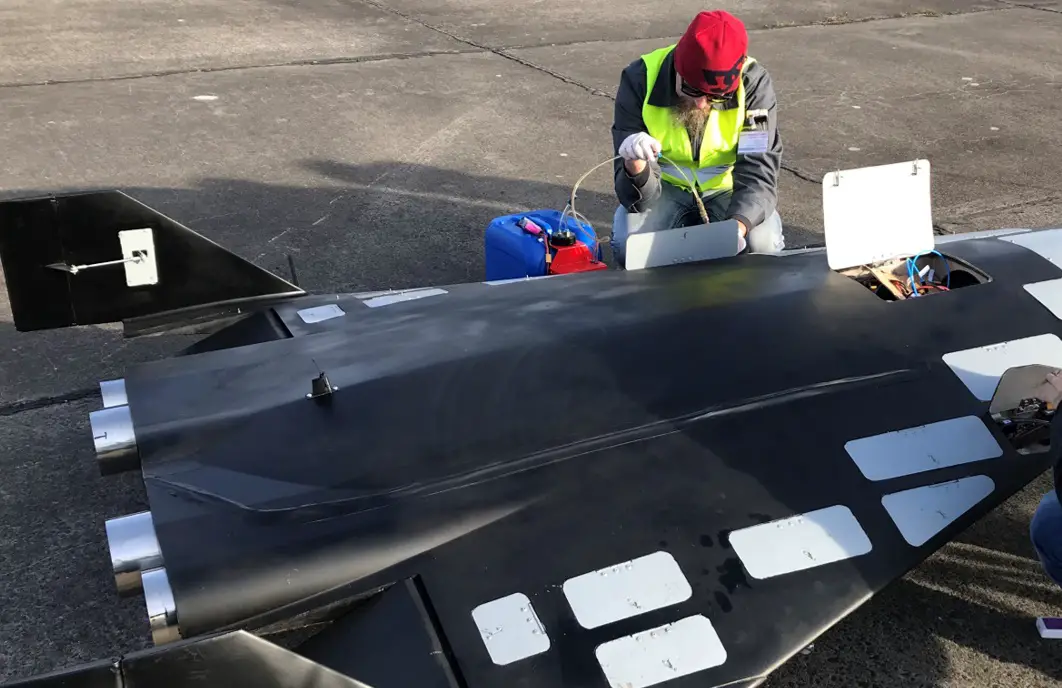The German Armed Forces’s turbojet-powered space aircraft demonstrator “Athena” completed its initial flight tests during the autumn of 2022. The aircraft is 3.5 meters long, with a mass of 120 kilograms. It is powered by four turbojets and can reach a top speed of Mach 0.4 (493 kilometers per hour). The Athena built by the Bremen-based startup Polaris Raumflugzeuge GmbH on behalf of the German Armed Forces. The company reported that the first test flight was carried out from the airport of Peenemünde within restricted airspace over the adjacent waters of the Baltic Sea on November 8, 2022. The demonstrator flew over a distance of about 10 kilometers (6 miles).
Athena features beyond visual line of sight (BVLOS) telemetry and semi-automated flight control systems, and is designed for the later integration of a liquid-fuel rocket engine. Due to its higher mass, performance and BVLOS capability, the vehicle was required to fulfil a comprehensive regulatory framework, including dedicated vehicle operation license, restricted airspace implementation, long-range radio/telemetry licenses, environmental assessment and a special insurance. For emergency cases, ATHENA is also equipped with a redundant flight termination system (FTS).

Athena is the third demonstrator built by Polaris. The company’s first aircraft, Stella, completed a successful flight in April 2020. In July 2021, the German Defense Ministry awarded the Bremen-based startup a €250,000 contract to study the application of its future production spaceplane, called Aurora, for reconnaissance missions. Aurora is expected to feature a rocket engine and reach hypersonic speed. In collaboration with the Institute of Aerospace Engineering of the Technische Universität Dresden, Polaris will investigate the potential of fitting the Aurora with aerospike nozzles that use 25-30% less fuel at low altitudes, making them a perfect solution for single-stage orbital launchers.
The German aerospace start-up POLARIS Raumflugzeuge GmbH is developing a revolutionary reusable space launch and hypersonic transport system that operates like an aircraft. Based on more than 30 years of German and European spaceplane research, the development of the spaceplane AURORA began at the German Aerospace Center DLR. Aurora combines aircraft and rocket launcher technologies with a unique vehicle design, and offers a game-changing economic viability as well as opening the door for routine low-cost and safe access to space. In order to validate the technology and accelerate the spaceplane development, POLARIS has been developing a series of scaled flight demonstrators.















